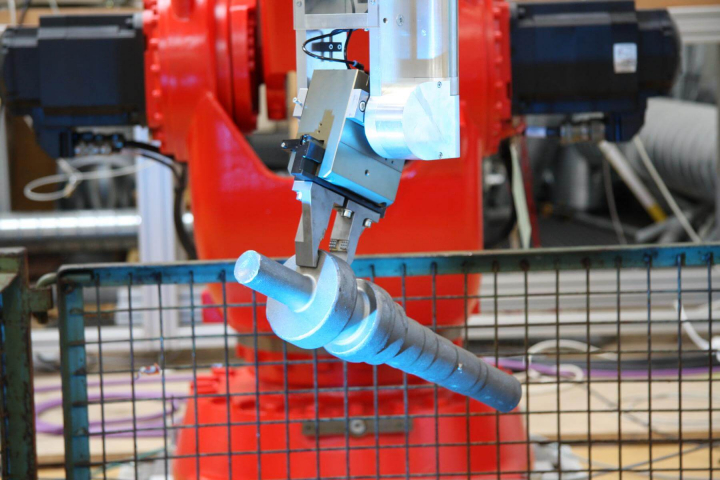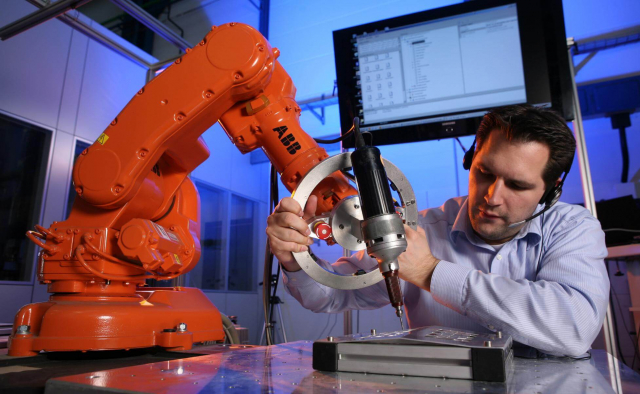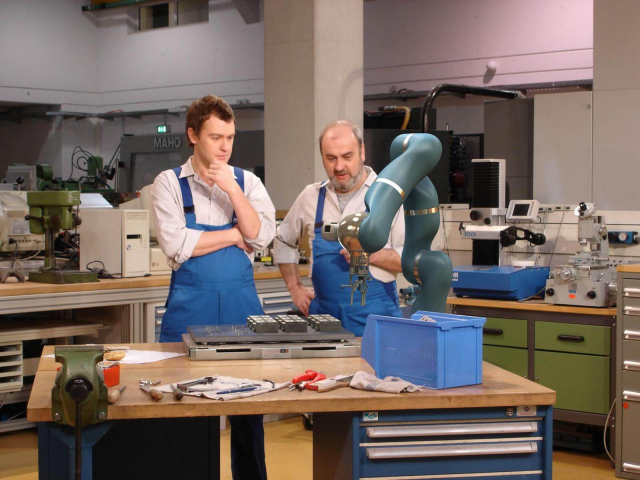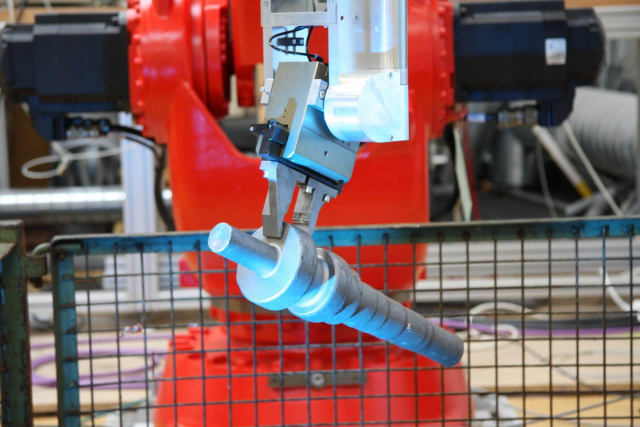
The European Robot Initiative for Strengthening the Competitiveness of SMEs in Manufacturing
SMErobot™ was an EU FP6 Integrated Project (2005-2009) and succeeded in uniting the leading European robot manufacturers, research institutes, scientists, software engineers and consultants towards achieving three central robot innovations:
- the robot should understand easily learnable, ‘intuitive’ commands
- it should meet all safety-relevant requirements for sharing the workplace with human colleagues
- it should be capable of being quickly integrated into an existing manufacturing environment: simply plug and produce
New robot technologies for SMEs
SMErobot™ has become a synonym for a joint European effort by robot automation industries to give new impetus to the introduction of robot technology in small and medium-sized businesses: An entirely new, modular and interactive generation of robots which, in addition to being quick to install and easy to operate, will also help to make European SMEs more competitive thanks to their cost-effective design.
The project has been a resounding and widely [1] recognized success [2] and would not have been possible without a joint European-wide effort in terms of building up a critical mass, involving ‘best-of’ partners in S&T competence and resources, and a EU-wide dissemination.
Lasting impact on European SME-type manufacturing
Through the flexible combination of individual modules, the aim was to cut investment and operating costs to one-third. Nor is SMErobotTM limited to the development of hardware and software: the project also covered the development of new, SME-compatible investment and financing models as well as the integration of robot technology into manufacturing processes and process chains.
Pilot trials in small and medium-sized enterprises from the fields of casting, mechanical engineering and metal- and wood-working were used to prove the innovation potential of the technologies and applications.
During these pilot trials, the robots were optimized for use in a wide range of future applications and industries. The project has produced a lasting impact on European SME-type manufacturing: It helped put European robotics industry into a world leading positions through critical innovations, particularly in human-robot interaction, sensor integration, automatic robot program generation from CAD data, and use of plug&play technologies.
The project’s numerous SME-end-user campaigns (videos, trade-fair-appearances, SME-workshops, participation in the first European SME week etc.) have created awareness, interest and numerous pilot applications in typical SME-type manufacturing. In fact the project has become a world-wide known trade mark and acclaimed success story regarding consortium composition, R&D efforts, technology transfer, reach-out and impact to end-users and effective management [3].
Video: “Coffee Break” by FP6-project SMErobot™ on YouTube
[2] Industrial Technologies Best Project Award Finalist http://www.industrialtechnologies2012.eu/best-project-award.html
[3] Final Report Summary and Result In Brief of SMErobot (The European Robot Initiative for Strengthening the Competitiveness of SMEs in Manufacturing) http://cordis.europa.eu/result/report/rcn/46622_en.html
The initiative goes to its next level: SMErobotics
The follow-up EU research initiative SMErobotics (2012-2015) is focused on expanding the capabilities of modern industrial robots to include cognitive skills: An intelligent robotic system does not rigidly follow a specific program. Instead, it learns from and with its human co-worker.
It continuously improves the quality of its work through human-machine interaction and can be assigned new tasks by the worker without the need for the involvement of an external system integrator or a lengthy stoppage in work. The robot of the future is to be able to communicate with its human “colleague” in a variety of ways depending on the particular situation: from simple voice commands to the input of texts or graphics to intuitive robot guidance.
Yet the robot’s interaction with its human co-worker is planned to go even further: SMErobotics aims to make it possible in future for a human worker to teach the robot new tasks by practical demonstration, i.e. by “showing” the robot how to carry out even complex tasks of the kind found in industrial production.
Video: “SMErobotics project video” by FP7-project SMErobotics on YouTube
Check the robots in manufacturing gallery as well as the human-robot interaction galleryfor further images.
Acknowledgments and Contact:Martin Haegele, Head of Department Robot and Assistive Systems
Fraunhofer Institute for Manufacturing Engineering and Automation IPA
Nobelstrasse 12
70569 Stuttgart
Germany
Phone: +49 711 970 1203




